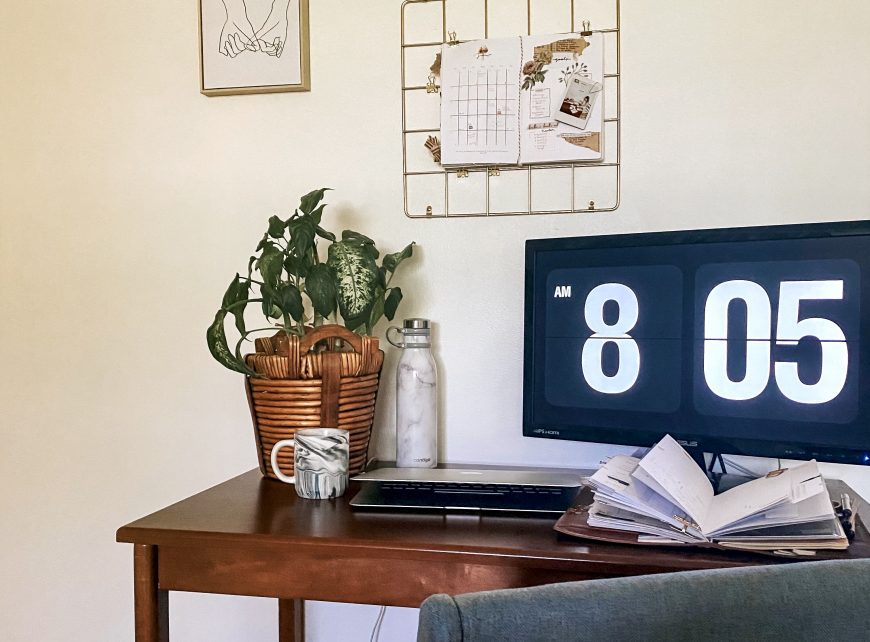Despite ourselves, we are pretty big fans of personality research. I think both of us have tried to quit the whole personality-test scene about a dozen times, but we keep coming back to it.
Truth is, we know that God loves diversity, and has built it into His Creation in some pretty astonishing ways. One of the most interesting, delightful, and sometimes confounding ways is the diversity of human personalities.
Within the boundaries of healthy ethics is a vast array of valid differences in which individuals perceive, engage, and respond to the world around them. Observing these differences, naming and cataloguing them, and then discussing them in light of God’s Word is work that seems to fall along the same lines as what Adam started doing with the animals in the garden. Only, unlike animals, God has put eternity in our hearts, and so our psyche is impossible for humans to fully comprehend and define. But to us, that truth only serves to magnify the intrigue of personality science. So we keep on discussing all of these significant differences in order to cultivate understanding, cooperation, and fruitfulness across the board.
We also research these things in order to better understand our own tendencies, identify any needs we’ve been ignoring, address personal weaknesses, tap into our core motivations, and better leverage our strengths.
Just like learning your top Love Languages can help you build into your marriage, or pegging Enneagram numbers can help you better respect your friends, learning your Productivity Personality can really help you begin to develop the most effective conditions in your home, office, and team systems for getting things done.
Working Personality
In his immensely practical book, The Synergist, Les McKeown outlines three types of people on your average working team:
- the Visionary: this is the person who is constantly imagining ways to get to the next level
- the Operator: this is the person who is consistently getting things done
- the Processor: this is the person who obsesses over the systems that make everything work sustainably
Most of us have a dominant trait, and then a secondary one. And, like anything else, every type has strengths and weaknesses.
For instance, Shelby is a Visionary-Processor. She is always seeing the bigger picture, and then feeling the urge to create some kind of list or calendar or habit to get the team from A-Z. The problem is, all the ideas and systems she produces aren’t always super realistic without a lot of healthy feedback to tame them into something doable. It’s also easy for her to feel irritated that the letters B-Y are full of a lot of minutiae that distract from the initial burst of inspiration or the ending triumph of accomplishment.
McCauley is an Operator-Visionary. Getting stuff done and then dreaming about the next big goal are both her native language, but she can often feel overwhelmed by not being able to see how everything is working together to a single strong end. She never questions the amazing possibilities, but she does tend to tame Shelby’s chomping-at-the-bit to up-level with the same serious question: “But have you finished this other vital task?”
McKeown’s book urges the reader to identify their own working personality and the personalities of the other influential people on their team, and to understand the various strengths and weaknesses, and the ways that each personality can clash. The goal of all of this inner-work is to become what he calls a Synergist: someone who is realistic about the team’s dynamics, can patch personality holes when hiring, can work to resolve conflict, and can weave the team’s various strengths into a singularly powerful force.
After Shelby read this book in 2019 and we examined the Evergreen team dynamics, we began praying that we could find a Processor-Operator to join the team. We knew that pulling another Visionary on the team could serve to drown out McCauley’s common-sense approach that wanted to see the results that come from consistency before jumping into a new strategy. We also knew that my hankering for organization and sustainability would solve the overwhelm problem—so long as the systems we created were actually practical. We also knew that a mere Processor (without an Operator wing) would bog us down a bit too much with systems, without having that can-do, problem-solving spirit that our tiny startup needed from every single member on our founding team.
Not too long after, Shelby was having a conversation with Clari at a family reunion (fun fact: she’s my husband’s cousin by marriage), and she mentioned that she was a Virtual Assistant. Something was seriously clicking. After an interview and trial run, we quickly realized that she was the Processor-Operator we’d been praying for.
Knowing your working personality is useful for so much beyond just hiring. It can be useful in any working relationship. Knowing that McCauley is an Operator has helped Shelby make sure that she included progress updates in team meetings. Knowing that Shelby is a Visionary has helped McCauley understand that Shelby’s not flaking out on the here and now—but that she’s hardwired to be envisioning what’s next. She also has learned that I’m a well of ideas that can be tapped at any time with a single question—and McCauley is always there to help Shelby prioritize the next best idea.
Knowing your working personality can also help you identify your personal weaknesses so that you can stop spinning your wheels.
Shelby was able to identify that she didn’t have many Operator tendencies. This meant that while she was a natural at reverse-engineering huge goals, it was really tempting for her to try to skip the consistent effort necessary to turn those goals into a reality. So she started to create planning habits that helped her focus on action over more strategizing. She started to use her planner to record “tada lists” (things that I got done) instead of just todo lists, as a way to spur herself into doing what she knew was needed. She also started to be honest about her tendencies to procrastinate follow-up and project completion, to eliminate distractions that limited significant progress, and to reach out to others for accountability.
But even while building these essential habits, Shelby also fed her inner Visionary-Processor by listening to podcasts that stretched her imagination, externally-processing dreams with certain designated people, and giving herself permission to flesh out new ideas for the future when the time was right.
So how about you? Take this incredibly simple quiz to gain more insight on your productivity personality.
Then, take time to journal through the following prompts:
- How can you mitigate weaknesses through intentional planning habits?
- How can you feed your strengths?
- What strengths does your team have? Who do you need to hire?
_______________________________________
Today is the last day to purchase our Q2 subscription box! We ship our sub boxes four times a year and they contain 3 Monthly booklets along with curated planning accessories. The Monthly is the muscle of our planning system. It’s a five-week undated day planner featuring week spreads, habit trackers, timeblocked day pages, and plenty of bullet grid flex space to make the planner completely yours. We can’t wait to see what you do with the right tools in hand!





